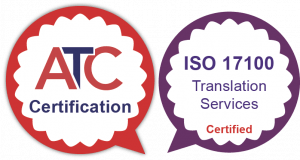Many of our projects, across marketing, psychometrics and assessment translation, require further work to ensure cultural and functional equivalence of the translated texts. This is where localisation and adaptation are involved.
What do localisation and adaptation actually mean?
So what do we mean by localisation and adaptation? For a start, our American colleagues will think it strange to see “localisation” spelt with an “s”. As we are UK-based company, we will stick with the British English spelling with apologies to our North American friends!
Localisation
Spelling is just one part of a high-quality translation and localisation process, that may require changes when moving from one target country to another (i.e. from the US “localization” to the UK English “localisation”).
Localisation in general means that you take something in the original text and change it so that it is meaningful in the target market. Currency and weights and measures are just some of the areas that need to be localised. This helps the translation “feel” more familiar.
For example, in the UK, the date “August 11th, 1988″ is written as 11/08/1988.
In the USA, the same date would be understood as November 8th, as the month comes before the date. Date formats may therefore need to be localised for the USA as follows: 08/11/1988.
There are a number of other aspects that may require localisation, such as:
- Time
- Currency
- Telephone numbers
- Weights and measures
- Images and icons
- Colours
- Etiquette (name formats, e-mail structures, etc.)
However, a simple localisation on its own won’t necessarily make the text meaningful in the target country.

Adaptation
Where localisation isn’t enough, and further work to ensure equivalence is needed – in particular for high-stakes content such as tests or assessments in the clinical and non-clinical areas, you then need to carry out the adaptation step to ensure that it makes sense and functions as intended for each audience.
Adaptation is the process of making contextual changes that change the underlying wording or scenario of a translation, while retaining the intended end “goal” of it.
Let’s look at an example:
In a clinical psychology assessment that we translated into Hungarian, one of the tests required the respondent to make calculations using currency. The figure in US Dollars was 10.
If you just change the currency symbol directly, then you get 10 Forint, which is the local currency in Hungary. However, given that the exchange rate at that time was $1 to 244 Forints, it makes no sense at all to have an amount which is the equivalent of 4 US pennies on which to do a calculation involving paying for something and getting change.

You then need to adapt the amount so that it is meaningful in a Hungarian setting. Given that the original amount was $10, you would multiply that 244 by 10 and round it to give an amount of 2,500 Forint. This gives you a meaningful amount that someone could take into a shop to purchase something and to calculate the change to be given.
However, you also need to take into account the financial realities in other countries when adapting texts. In India, for example, the equivalent of $10 may be someone’s weekly wage, so it isn’t a trivial sum, whereas in the USA, $10 is, relatively speaking. You therefore need to adapt this to a realistic sum for the target country.
- The amount has to be localised into the local currency of the target country.
- The amounts may then need to be adjusted to ensure that they are meaningful locally. When Italy used the Lira as its currency, you couldn’t just take 1 USD and convert it to 1 Lira, as this was a nonsensical amount.
- Amounts also have to be relative: an assessment with role play may require someone to go to a shop and calculate the change they get after their purchases. If they hand over a 50 dollar bill for a few groceries, this may represent someone’s monthly salary in other countries, so the calculation would not be meaningful.
- Finally, in the USA, you have the dollar, quarter, dime, nickel and penny. In many countries in Europe, you have only the euro and the cent. Having five different names for coins and notes makes the calculation more difficult than just having two.
Other examples of aspects which may need localising or adapting are lists of words used for memory recall purposes, or for aptitude tests, items may need to be adapted due to a change in the unit of measurement required (metric vs. imperial).
Examples of Localisation and Adaptation
One final localisation and adaptation example involves the calculation of the number of tiles needed to cover a bathroom wall.
In the original psychometric test item, the wall was 10 feet by 5 feet, and the tiles were 6 inches square. To localise this for a country using metric units would lead to the calculation of around 3m x 1.5m and tiles of 30cm, which changes the level of difficulty if sizes are localised to their direct metric equivalents.
We therefore changed the type of room to an office, changed the type of tile to a carpet tile, and the size of the tile to 50cm². This meant that the office floor could then be 10 metres by 5 metres, and the tiles would realistically be half a metre square, maintaining the answer of the original item and the relative difficulty level.
